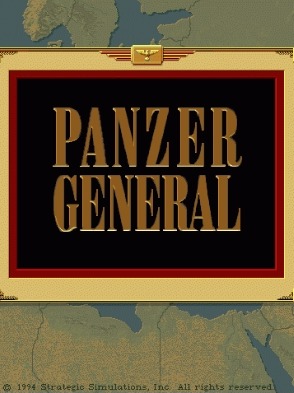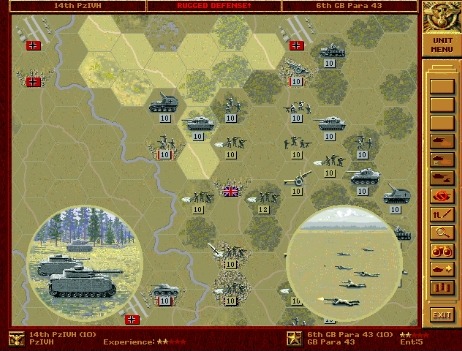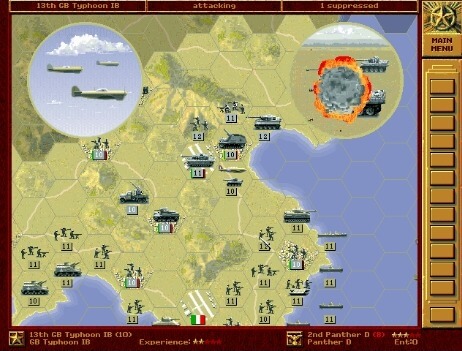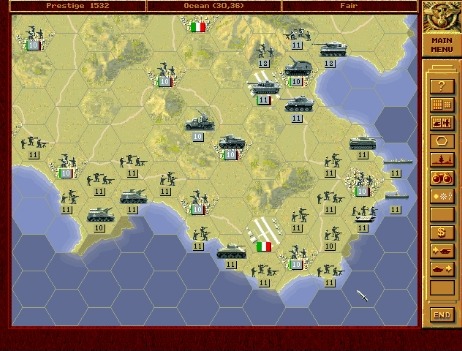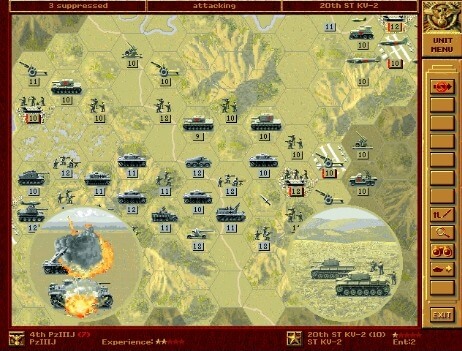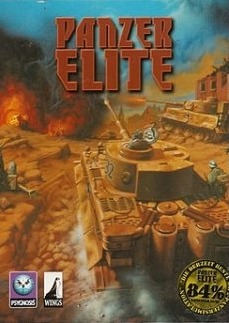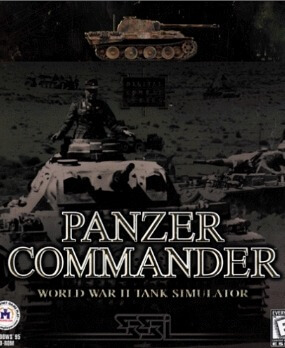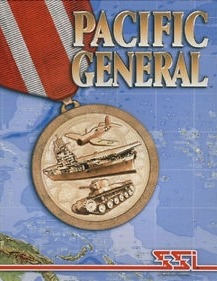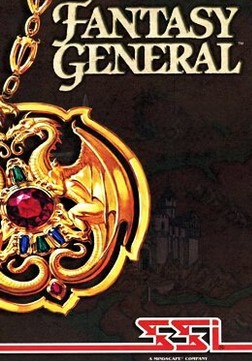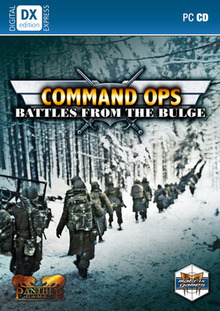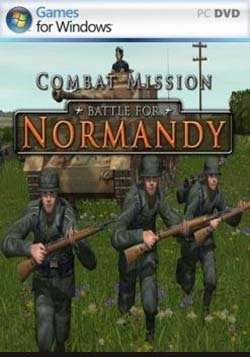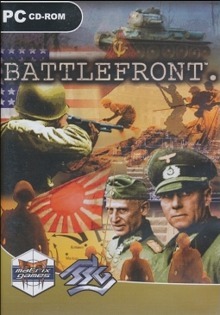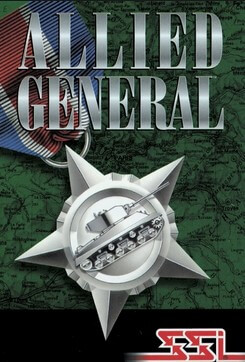The performance of units is affected by their experience, which takes very long to collect. Particularly in Campaign mode one then has to protect the experienced units as the most valuable asset.
Campaigns
Panzer General has 38 scenarios based on real or fictitious battles from World War II. The player can engage in a single battle or a campaign mode.
In Campaign Mode, a series of battles unfold as a campaign heads to victory. There is one long campaign as Germany, with five starting locales:
Poland (1939); from Poland, through Norway, to the West with possible amphibious invasion in Britain.
North Africa (1941); from North Africa to the Middle East.
Barbarossa (1941); from the initial invasion of the Soviet border to Moscow.
Italy (1943); from the Allied landing on Sicily to the end of the war.
Kharkov (1943); from the German spring offensive to the end of the war.
The task in most scenarios is to take all objective cities in a given number of turns; taking them at least 5 turns earlier is considered a major victory. In scenarios from later stages of war, the Germans try to hold positions against a stronger enemy. A typical task is then "hold at least two of our objective cities for 20 turns; for a major victory, hold at least five."
All campaigns branch out and end either by the general being sacked for incompetence or end of the war. In Campaign Mode, a major victory could possibly change known historical events. For example, after a major victory over France, the player invades Britain. Later in the game, after a major victory in Barbarossa, the player can convince the German High Command to attack Moscow immediately (which costs him or her much prestige) rather than diverting to Kiev before Moscow.
If the player achieves a major victory both in Britain and in Moscow, he or she is allowed to carry out an invasion of the United States and reach Washington. In any other case, he/she must fight well in many battles to get another chance to attack them. If either Britain or USSR survive this attack, they drive the Germans all the way back to Berlin. The best the player can do is to fight well in each battle to have enough prestige for the next one - and to achieve a major victory in the final defense of Berlin.
Development
The design of Panzer General was based on the Japanese wargame Daisenryaku. The Strategic Simulations team had played a Japanese-language version of the game's Sega Genesis release extensively, and were inspired by its streamlined design. The company's Graeme Bayless later wrote of Daisenryaku, "The genius in this game was the fact that it took the highly complex subject (WWII conflict on land) and boiled it down to the pertinent parts."
Daisenryaku would go on to serve as the inspiration for the entire Panzer General series.
Reception
Sales
Panzer General was a commercial success. By November 1995, it had sold over 100,000 copies in the United States and 50,000 in Europe. According to William R. Trotter of PC Gamer US, it was particularly popular in Germany. By August 1996, sales had surpassed 250,000 copies. Describing the situation at the time, Computer Gaming World columnist Terry Coleman wrote, "When you consider that a new Windows 95 and Macintosh version has just been released, it seems fair to say that PG will be incontestably the best-selling historical wargame of all time". The following year, T. Liam McDonald of GameSpot reiterated that the game had sold over 250,000 copies, and noted that 60,000 of these sales came from its PlayStation release. McDonald declared Panzer General "the best-selling wargame of all time" in September 1997.
Panzer General won Computer Gaming World's 1994 "Wargame of the Year" and PC Gamer US's "Best Wargame" awards, and was a runner-up for the former magazine's overall "Game of the Year" award, which went to UFO: Enemy Unknown. The editors of Computer Gaming World called Panzer General "the first wargame since 1987 to garner the #1 spot on the CGW Top 100 poll—a fine endorsement for the most exciting wargame in a long time."
In 1996, Next Generation listed it as number 51 on their "Top 100 Games of All Time", contending that though the game's interface is simple, the complexity of the strategy is exceptional. In 1996, Computer Gaming World declared Lemmings the 15th-best computer game ever released, and listed the Game Over scene as #8 on its list of "the 15 best ways to die in computer gaming".
In 1996, Panzer General won the Origins Award for Best Military or Strategy Computer Game of 1995.
